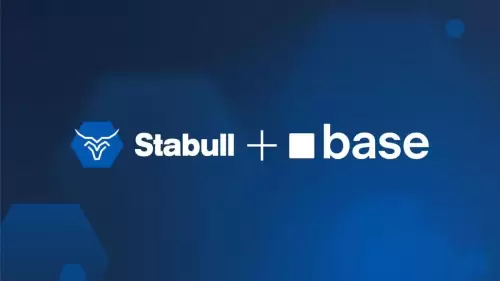 |
|
 |
|
 |
|
 |
|
 |
|
 |
|
 |
|
 |
|
 |
|
 |
|
 |
|
 |
|
 |
|
 |
|
 |
|
Cryptocurrency News Articles
Stablecoin Yields: Coinbase, PayPal, and the Regulatory Tightrope
Aug 05, 2025 at 05:51 pm
Navigating the evolving landscape of stablecoins, yields, and regulatory scrutiny involving Coinbase and PayPal.

The world of stablecoins is getting spicy! Despite new rules, Coinbase and PayPal are still finding ways to offer users tasty yields on their stablecoin holdings. But how are they doing it, and what does it mean for the future of digital dollars?
The GENIUS Act and the Yield Ban
The GENIUS Act, intended to bring order to the stablecoin market, bans issuers from directly offering interest or yield. The goal? To separate payment-focused stablecoins from speculative investments. However, the law specifically targets issuers, leaving a potential opening for platforms like Coinbase and PayPal.
Coinbase, PayPal, and the Reward Game
Coinbase, partnered with Circle (USDC issuer), offers around 4.1% APY on USDC holdings. PayPal, working with Paxos (PYUSD issuer), provides about 3.7% APY through its app and Venmo. Crucially, they avoid calling these payouts "interest," framing them as rewards or revenue-sharing. It's like saying, "We're not paying interest; we're just being super generous!"
A Legal Gray Zone?
This workaround highlights a key tension in stablecoin regulation. Issuers can't offer yields, but intermediaries seemingly can. Critics argue this creates an uneven playing field. Supporters say platforms are simply monetizing their float and platform revenues, benefiting users. Regulators, however, might see it as a loophole undermining the spirit of the law.
SEC's Stance: Stablecoins as Digital Cash
The SEC is trying to keep up. They've issued interim guidelines classifying certain stablecoins as digital cash equivalents, under the initiative "Project Crypto". To qualify, stablecoins must maintain a consistent 1:1 USD peg, be fully collateralized with liquid assets, and offer on-demand redemption rights. This aims to increase institutional confidence and acceptance of stablecoins.
Tokenized MMFs: A Rising Alternative?
With restrictions on stablecoin yields, tokenized money market funds (MMFs) are emerging as a potential alternative. JPMorgan and EY suggest they could replicate stablecoin speed and flexibility while maintaining regulatory oversight. While stablecoins have DeFi advantages, the yield factor could sway investors toward MMFs.
The Banking Lobby and Regulatory Influence
Whispers suggest the traditional banking sector played a role in shaping the GENIUS Act, aiming to protect their turf from stablecoin competition. Banks feared losing depositors to higher-yielding stablecoins. It's like a classic showdown: old-school finance versus new-age crypto.
The Future: Regulation vs. Innovation
The stablecoin landscape is a constant tug-of-war between regulation and innovation. The GENIUS Act and the SEC's evolving guidelines are attempts to manage risks, but they also risk stifling innovation. Platforms are finding creative ways to navigate the rules, and regulators are playing catch-up.
The Bottom Line
For now, users can still earn on their stablecoin holdings via platforms like Coinbase and PayPal. But the future of these reward programs depends on how strictly regulators enforce the law. It’s a wild ride in the world of digital finance!
So, grab your stablecoins, buckle up, and enjoy the (potentially fleeting) yields. Who knows what tomorrow will bring in this ever-evolving saga?
Disclaimer:info@kdj.com
The information provided is not trading advice. kdj.com does not assume any responsibility for any investments made based on the information provided in this article. Cryptocurrencies are highly volatile and it is highly recommended that you invest with caution after thorough research!
If you believe that the content used on this website infringes your copyright, please contact us immediately (info@kdj.com) and we will delete it promptly.






























































